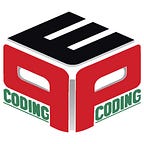From Dummies to Data Structures and Algorithms: A Beginner’s Guide to Programming
Have you always wanted to learn how to program? It’s a tough world out there, especially with all the different programming languages. Whether you use JavaScript, PHP, Python, or Ruby, it’s important to know that programming is not just about typing code into your computer. It takes time and practice! This guide will introduce you to some of the basics of computer programming in languages that are easier for beginners. Once you have mastered these concepts in one language, learning a new language will come much more easily. From dummies to data structures and algorithms: A beginner’s guide to programming!
Introduction to programming
It’s important to understand the basics of programming before you dive in and actually start working on a project for your company. The process of doing a certain computation, generally by designing/building an executable computer program, is known as computer programming. Programming entails duties such as analysis, algorithm generation, algorithm accuracy and resource use assessment, and algorithm implementation.
What is a computer program?
A computer program is a set of instructions that are written in one or more programming languages. These instructions tell the computer what to do, which can vary depending on the type of program. For example, a word processing program might have instructions for how to show text and graphics on your screen. A video game might have instructions for how to take input from your keyboard and mouse and calculate where you should go in the game based on those inputs.
Programming basics
# The Basics
There are many different coding languages to learn as a beginner, but programming is not just about typing code into your computer. It takes time and practice!
# Variables
Variables store values in your program so they can be used later. As you might guess, when you want to use a variable stored on the computer, you put it in quotes: “Hello there!” Variables represent different values in different ways. Some variables can only hold numbers (integers or floats), others only letters, and still others both letters and numbers.
Data Structures and Algorithms
Data structures and algorithms are important concepts in programming. They allow programmers to create steps that are followed every time a program is executed. Data structures describe the way data is organized, while algorithms have to do with the execution of a task.
Programmers need to know both in order to build any kind of complex program. These concepts may sound difficult, but they are really quite simple. Let’s take a quick look at an example algorithm:
Input: A number
Output: Double the number inputted
This algorithm takes one input and produces one output. Now, let’s look at an example data structure:
Input: A list of numbers
Output: The first five items from the list sorted from smallest to largest
This data structure takes one input and produces one output.
How Data Structures and Algorithms are important for technical interviews?
Why does almost every other interviewer in a technical interview ask questions on Data Structures and Algorithms? Because Data Structures and Algorithms play a significant role in a coder’s day-to-day operations. As most challenges center on picking the correct data structure for the specific problem, it is necessary to brush up on the fundamentals of various data structures.
Where to learn from?
If you want to learn coding from scratch, you are at the right place. Check out our free resources on NADOS Content section to get started for an in-depth understanding of programming concepts.
NADOS is a platform built in-order to make learning fun and addictive. Here you get a community of like-minded people, both newbies and experienced to interact with. Furthermore our Career section provides a number of job opportunities as well.
If you want to learn to program, this guide will provide you with the basic knowledge you need. However, you should consider learning a more in-depth understanding of programming via NADOS for a better experience.
Author: Sejal Shaw
Also read:
